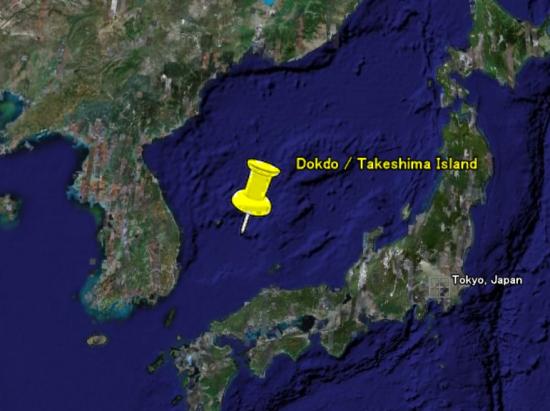
Dokdo. Takeshima. The Liancourt Rocks.
This small group of islets, roughly situated between South Korea and Japan in the East Sea, has been a startling topic of controversy for the past sixty years. The islands go by many names. In Korea they are known as Dokdo, in Japan – Takeshima, but many Westerners still refer to the islands as the Liancourt Rocks, named after the French whaling vessel that represented the West’s first encounter and official charting of the rocks. For this article, I will refer to the islands as the Liancourt Rocks because that is a neutral name designation.
The Liancourt Rocks are actually comprised of two main islets and 35 smaller rocks that are currently controlled by the South Korean government. South Korea claims that the islands have been thoroughly documented and can prove, with the use of ancient maps and historical records, that the islands have always been under Korea’s jurisdiction.
The heated and conflicting arguments surrounding the sovereignty of the Liancourt Rocks, however, can be traced to 1905 when Japan legally added the islets to its territorial boundaries. Shortly after, in 1910, Korea (which had been an independent empire) officially became a protectorate/colony of the Japanese Empire. Sovereign disputes, over the islands, ceased until Japan’s defeat in World War II.
Japan’s defeat in 1945 led to the complete abdication of all Japanese colonial and protectorate territories. This was formalized in the Treaty of San Francisco which:
. . . officially renounces Japan’s treaty rights derived from the Boxer Protocol of 1901 and its rights to Korea, Formosa (Taiwan), Hong Kong (a British colony), the Kuril Islands, the Pescadores, the Spratly Islands, Antarctica and Sakhalin Island.
However, the Liancourt Rocks were not mentioned in the final draft of the San Francisco Treaty. Thus, once the treaty was prepared and signed, legal ownership of the islets was left uncertain. To this day, Japan and Korea both lay claim to the Liancourt Rocks through historical and geographical connections with the islets.
A simple resolution over the “true” sovereignty of the Liancourt Rocks is unlikely to pass. Today it remains an internal dispute between South Korea and Japan. The Japanese government has continually pressed South Korea to take the matter to an international court of law. South Korea has continually refused these requests citing that Korean ownership of the islets are unquestionable. One article on the matter put it quite well by stating:
In cases like this, possession is nine-tenths of the law. Therefore, Dokdo will probably remain in Korean hands; That is unless the Right Wing in Japan takes over and/or the Japanese pacifist constitution is rewritten to accommodate a Japanese military take-over of the Islets.
The notion that Japan would use military force to retake the islands is, extreme, at best and highly unlikely to happy anytime in the foreseeable future.



